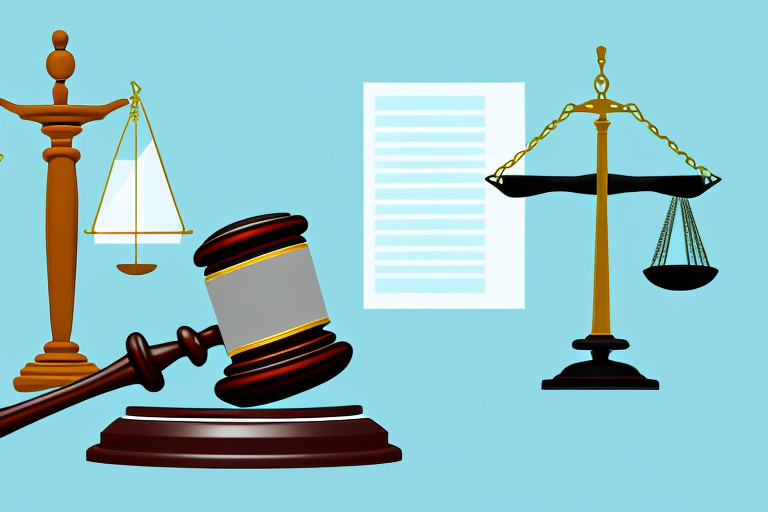Camp Lejeune Bladder Cancer Lawsuit Settlements: What You Need to Know
The Camp Lejeune Bladder Cancer Lawsuit settlements have become a topic of interest for many individuals affected by the contamination at the Marine Corps Base in North Carolina. This article aims to comprehensively understand the lawsuit, its legal proceedings, details of the settlements, implications for victims, future precedents, and seeking legal help. By delving into the history of Camp Lejeune, the link between the base and bladder cancer, and the impacts of the settlement, we hope to shed light on this significant topic.

Understanding the Camp Lejeune Bladder Cancer Lawsuit
The History of Camp Lejeune
In order to grasp the implications of the Camp Lejeune Bladder Cancer Lawsuit, it is important to understand the history of the Marine Corps Base. Established in 1941, Camp Lejeune has been home to thousands of military personnel and their families. It has served as a training ground for Marines and a place of residence for others stationed there.
Over the years, Camp Lejeune has witnessed the comings and goings of countless individuals who have dedicated their lives to the service of their country. It has been a place of camaraderie, discipline, and sacrifice. Families have made homes within the base, building a sense of community and support.
However, it was not until the late 1970s that serious health concerns arose in relation to the base's water supply. What was once seen as a source of sustenance and hydration turned out to be a potential threat to the well-being of those who called Camp Lejeune their home.
The Link Between Camp Lejeune and Bladder Cancer
Investigations and subsequent studies have presented strong evidence connecting the contaminated water at Camp Lejeune to various health issues, including a higher prevalence of bladder cancer among residents and former residents. The discovery of this link has sent shockwaves through the community and has prompted legal action seeking justice and compensation for those affected.
The water supply at the base was found to be contaminated with harmful chemicals such as benzene, trichloroethylene (TCE), and vinyl chloride. These carcinogens, which are known to cause significant harm to human health, have been unknowingly consumed by individuals who relied on the base's water for their daily needs.
Bladder cancer, a malignant disease that affects the lining of the bladder, has been particularly prevalent among individuals who were exposed to the contaminated water at Camp Lejeune. The toxic substances in the water have been identified as significant risk factors for the development of this type of cancer.
Those affected by bladder cancer as a result of their time at Camp Lejeune have faced numerous challenges. The physical and emotional toll of battling cancer, coupled with the financial burden of medical expenses, has taken a heavy toll on individuals and their families. The pursuit of justice through the Camp Lejeune Bladder Cancer Lawsuit aims to provide some relief and accountability for the suffering endured.
It is crucial to recognize the significance of this lawsuit, not only for those directly impacted but also for the broader implications it may have on environmental health and military infrastructure. The outcome of this legal battle could set a precedent for holding institutions accountable for their role in exposing individuals to harmful substances.
The Camp Lejeune Bladder Cancer Lawsuit serves as a reminder of the importance of ensuring the safety and well-being of those who serve in the military and their families. It highlights the need for thorough investigations, stringent regulations, and proactive measures to prevent similar incidents from occurring in the future.
The Legal Proceedings of the Lawsuit
The Camp Lejeune Bladder Cancer Lawsuit involved numerous parties, including affected individuals, advocacy groups, and legal representatives. Attorneys specialized in environmental law and personal injury played a significant role in advocating for the rights of those impacted by the contamination.
As the legal battle unfolded, it became evident that the Camp Lejeune Bladder Cancer Lawsuit was not just a simple case. It was a complex web of interconnected events, involving multiple legal proceedings, each with its own set of key players and timelines.
Key Players in the Lawsuit
One of the key players in the Camp Lejeune Bladder Cancer Lawsuit was the affected individuals themselves. These brave men and women, who had suffered the devastating consequences of the contamination, became the driving force behind the legal battle. Their determination to seek justice and hold the responsible parties accountable was unwavering.
Advocacy groups also played a crucial role in supporting the affected individuals and raising awareness about the issue. These organizations tirelessly campaigned for justice, providing resources, legal assistance, and a platform for the victims to share their stories.
Legal representatives, particularly those specializing in environmental law and personal injury, were instrumental in fighting for the rights of the affected individuals. These attorneys dedicated countless hours to building strong cases, gathering evidence, and presenting compelling arguments in court.
On the other side of the legal battle stood the United States government, which was implicated in the contamination of the Camp Lejeune water supply. The government's legal team, consisting of experienced attorneys, vigorously defended their position, denying any wrongdoing and challenging the claims made by the affected individuals.
Timeline of the Legal Battle
The legal battle surrounding the Camp Lejeune Bladder Cancer Lawsuit was a protracted journey, spanning several decades. It began with initial investigations in the 1970s and 1980s, when concerns about the water contamination at Camp Lejeune first came to light. The discovery of toxic chemicals, including volatile organic compounds and carcinogens, in the base's water supply raised alarm bells and led to further inquiries.
In the 1990s, affected individuals filed lawsuits against the United States government, seeking compensation for the health issues they had developed as a result of the contaminated water. These legal actions marked a turning point in the fight for justice, as the victims found a way to hold the responsible parties accountable.
Over the years, the litigation process involved various appeals, settlements, and ongoing efforts to secure justice for victims. The legal battle was not without its hurdles and setbacks. The government's legal team mounted strong defenses, challenging the validity of the claims and questioning the link between the contamination and the health issues experienced by the affected individuals.
Despite the challenges, the affected individuals and their legal representatives persevered, presenting compelling evidence and expert testimonies to support their claims. The timeline of the legal battle was dotted with significant milestones, including landmark court rulings, negotiations for settlements, and public awareness campaigns that aimed to shed light on the issue.
As the legal battle continued, the Camp Lejeune Bladder Cancer Lawsuit gained national attention, becoming a symbol of the fight for justice and accountability in cases of environmental contamination. The impact of this lawsuit extended beyond the courtroom, inspiring similar legal actions and prompting stricter regulations to prevent similar incidents in the future.
Details of the Settlements
The Camp Lejeune water contamination incident, which occurred between 1953 and 1987, has had far-reaching consequences for the individuals who resided or worked at the military base during that period. The settlements offered a glimmer of hope for those affected, providing them with a chance to seek compensation for the health issues they experienced as a result of the contamination.
Under the terms of the settlements, individuals who resided or worked at Camp Lejeune during the specified period were deemed eligible for compensation. This included military personnel, their families, civilian employees, and even contractors who were present on the base during the years of contamination. The scope of eligibility was broad, aiming to encompass as many affected individuals as possible.
Who is Eligible for Compensation?
The settlements recognized that the impact of the contamination extended beyond the immediate individuals who were exposed to the toxic substances. Surviving family members of affected individuals who tragically passed away due to bladder cancer were also eligible to file claims. This provision acknowledged the profound loss experienced by the families of those who succumbed to the illness, offering them a chance to seek redress.
Furthermore, the settlements took into account the various health conditions that were linked to the contaminated water supply. While bladder cancer was a primary concern, other illnesses such as kidney cancer, liver cancer, leukemia, and non-Hodgkin lymphoma were also considered eligible for compensation. This comprehensive approach aimed to address the wide range of health issues that arose as a result of the contamination.
How Much Compensation was Awarded?
The total amount awarded through the settlements was nothing short of substantial, with billions of dollars being allocated to the compensation fund. This significant financial commitment reflected the gravity of the situation and the recognition that those affected deserved adequate compensation for the hardships they endured.
Individual compensation amounts varied based on a range of factors. The severity of the illness played a crucial role in determining the level of compensation, with individuals who experienced more severe health issues receiving higher awards. Additionally, the individual's circumstances, such as their age, the length of time spent at Camp Lejeune, and the extent of their exposure to the contaminated water, were taken into consideration.
By tailoring compensation amounts to individual circumstances, the settlements aimed to provide a fair and equitable resolution for those affected. The goal was not only to acknowledge the suffering endured by the victims but also to provide them with the financial means to seek appropriate medical treatment and support.
What the Settlement Means for Victims
Impact on Health Care and Treatment Options
One of the significant implications of the Camp Lejeune Bladder Cancer Lawsuit settlements is the potential improvement in access to healthcare and treatment options for affected individuals. Compensation received through the settlements can help cover medical expenses, which may include specialized treatments and ongoing care.
Access to quality healthcare is crucial for individuals affected by the contamination at Camp Lejeune. The settlements provide a glimmer of hope by offering financial support to victims, ensuring they can receive the necessary medical attention they deserve. With the newfound resources, individuals can explore a range of treatment options, including advanced therapies and cutting-edge technologies.
The settlements also open doors to holistic care, addressing not only the physical aspects of the disease but also the emotional and psychological well-being of the victims. Through counseling services and support groups, individuals can find solace and understanding, helping them navigate the challenges they face on their journey to recovery.
The Emotional and Financial Impact
The settlements may provide some relief for victims, both emotionally and financially. The acknowledgment of the suffering endured due to the base's contamination can offer a sense of validation and closure, helping victims move forward. The recognition of their pain and the steps taken to compensate them for their losses can bring a much-needed sense of justice and healing.
Furthermore, the financial impact of the settlements cannot be understated. Dealing with a serious illness like bladder cancer can place an immense strain on individuals and their families. Medical expenses, including hospital bills, doctor visits, and medications, can quickly accumulate, leading to financial instability and stress.
However, with the compensation received through the settlements, victims can find some relief from these burdens. They can focus on their recovery and well-being without the constant worry of mounting medical bills and financial obligations. This newfound stability allows them to concentrate on rebuilding their lives and moving forward with hope and resilience.
Moreover, the financial assistance provided by the settlements extends beyond medical expenses. It can help cover other costs that may have arisen due to the contamination, such as lost wages, transportation expenses for medical appointments, and home modifications to accommodate the needs of individuals with disabilities resulting from the illness.
The Camp Lejeune Bladder Cancer Lawsuit settlements have far-reaching implications for victims. Not only do they improve access to healthcare and treatment options, but they also provide emotional validation and financial relief. The settlements offer a glimmer of hope and a chance for victims to rebuild their lives with the necessary support and resources.## Future Implications and Precedents
The Camp Lejeune Bladder Cancer Lawsuit settlements have set a precedent for other military base contamination cases. The outcomes of this lawsuit may serve as a catalyst for further legal action against government entities responsible for environmental hazards on military installations.
One of the key implications of the Camp Lejeune Bladder Cancer Lawsuit settlements is its potential impact on future lawsuits involving military base contamination. The resolution of this case has brought attention to the issue of environmental hazards on military installations and the responsibility of government entities in ensuring the safety and well-being of service members and their families.
As news of the Camp Lejeune Bladder Cancer Lawsuit spreads, it is likely that individuals and communities affected by similar situations will be inspired to take legal action. The successful settlements in this case may provide hope and encouragement for those seeking justice and compensation for the health problems and hardships they have endured due to military base contamination.
The Role of Environmental Factors in Future Lawsuits
This lawsuit has highlighted the importance of addressing environmental factors within military bases. It serves as a reminder of the duty of care that government entities have towards service members and their families. The Camp Lejeune Bladder Cancer Lawsuit may prompt greater scrutiny and accountability for preventing and addressing similar issues in the future.
When it comes to military bases, the health and well-being of service members and their families should be of utmost importance. The Camp Lejeune Bladder Cancer Lawsuit has shed light on the potential dangers that can arise from environmental hazards present on military installations. It has emphasized the need for thorough investigations, proper maintenance, and timely remediation to prevent any harm to those living and working on these bases.
With the resolution of this lawsuit, there is a possibility that stricter regulations and protocols will be put in place to ensure the safety of military personnel and their families. Government entities may be compelled to conduct more rigorous environmental assessments, implement effective monitoring systems, and promptly address any issues that arise. The Camp Lejeune Bladder Cancer Lawsuit has set a precedent for holding responsible parties accountable and may lead to a greater focus on preventive measures in the future.
Furthermore, this lawsuit may also prompt a reevaluation of the compensation and support provided to individuals affected by military base contamination. The settlements reached in the Camp Lejeune Bladder Cancer Lawsuit have provided some financial relief to the victims and their families, but there may be a push for more comprehensive assistance programs and long-term healthcare provisions for those impacted by similar situations in the future.
How to Seek Legal Help
Finding the Right Lawyer for Your Case
If you believe you have been impacted by the Camp Lejeune contamination and have developed bladder cancer, seeking legal assistance is crucial. It is important to find a lawyer with expertise in environmental law and experience handling cases related to military base contamination. They can guide you through the legal process and help you understand your rights and options.
Preparing for a Legal Consultation
Prior to consulting with a lawyer, it is helpful to gather any relevant medical records, including diagnosis and treatment documentation. Additionally, documenting your personal experiences and the impact of the contamination on your life can provide valuable evidence to support your case. Being prepared for the consultation will help your lawyer assess the viability of your claim and develop an effective legal strategy.
In conclusion, the Camp Lejeune Bladder Cancer Lawsuit settlements represent a significant milestone in providing justice and compensation to those affected by the contamination at the Marine Corps Base. Understanding the history of Camp Lejeune, the links between the base and bladder cancer, the legal proceedings, and the details of the settlements is essential.
The implications of the settlements for victims, future precedents, and seeking legal help are vital considerations for anyone impacted by this issue. By raising awareness and providing comprehensive information, we hope to assist individuals in navigating this complex topic and understanding their rights and options.
To get help with your Camp Lejeune lawsuit, get in touch with Lawsuit Legit today by using the contact form on this page.




